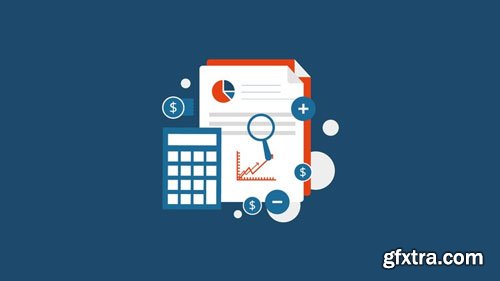
Genre: eLearning | Language: English + .VTT | Duration: 10.5 hour | Size: 4.22 GB
What you'll learn Homepage: https://www.udemy.com/introductory-financial-accounting-a-simplified-approach/
Students will learn about the basic accounting equation and the extended form of the accounting equation.
Students will learn how to analyse and classify transactions using a transaction analysis table.
Students will learn how to process general journal entries using the double-entry rules of accounting.
Students will learn how to post general journal entries to the general ledger accounts using t-accounts and a running-balance general ledger format.
Students will learn how to construct a trial balance.
Students will learn how to construct an adjusted trial balance.
Students will learn how to prepare a profit and loss statement (income statement) for a service and retail business.
Students will learn how to prepare a balance sheet in horizontal and vertical format for a service and retail business.
Students will learn how to prepare a simplified cash flow statement for a service and retail business.
Requirements
There are no formal prerequisites for this course.
An applied understanding of basic maths will be useful.
A pen, paper and basic calculator is needed.
Description
· This course is designed to develop and enhance the accounting knowledge and skills of students.
· Students will be introduced to important accounting concepts and learn a range of accounting skills which include:
1. Classifying and analyzing transactions
2. Preparing general journal entries
3. Posting journal entries to the general ledger accounts
4. Preparing a trial balance
5. Preparing a profit/loss statement
6. Preparing a balance sheet
7. Preparing a cash flow statement
· Students can successfully complete this course with minimal or no prior knowledge of accounting.
· Understanding and application of basic maths is recommended.
· A calculator, pen and writing paper are required.
· Students will learn about the accounting equation and all the components which make up the accounting equation such as assets, liabilities, equity, capital, drawings, profit, revenue and expenses
· Students will learn the double-entry rules of accounting and how to apply the rules to classify and record transactions.
· Students will also learn how to record transactions using the general journal and general ledger.
· The course structure is as follows:-
· Section 1-introduction
· Section 2-accounting concepts
· Section 3-accounting equation
· Section 4-double-entry rules of accounting
· Section 5-transaction analysis
· Section 6-general journal entries
· Section 7-general ledger accounts
· Section 8-trial balance
· Section 9-profit and loss statement
· Section 10-balance sheet
· Section 11-cash flow statement
· Section 12-practice quiz 1
· Section 13-assignment-calculate monthly profit
· Section 14-practice example 1 Mary’s tuition service
· Section 15-practice example 2 Albert’s car wash
· Section 16-accounting for merchandise businesses
· Section 17-practice example 3 Jane’s perfume shop
· Section 18-GST transactions
· Section 19-practice example 4 Harry’s stylish hairdressing
· Section 20-course review practice example 5 J&J gourmet chocolates Pty Ltd
· Section 21-course review
· Section 22-course review quiz
Who this course is for:
Beginning or continuing students of financial accounting will find this course valuable.
Small business owners and managers will find this course useful.
Top Rated News
- Sean Archer
- AwTeaches
- Learn Squared
- PhotoWhoa
- Houdini-Course
- Photigy
- August Dering Photography
- StudioGuti
- Creatoom
- Creature Art Teacher
- Creator Foundry
- Patreon Collections
- Udemy - Turkce
- BigFilms
- Jerry Ghionis
- ACIDBITE
- BigMediumSmall
- Boom Library
- Globe Plants
- Unleashed Education
- The School of Photography
- Visual Education
- LeartesStudios - Cosmos
- All Veer Fancy Collection!
- All OJO Images
- All ZZVe Vectors



